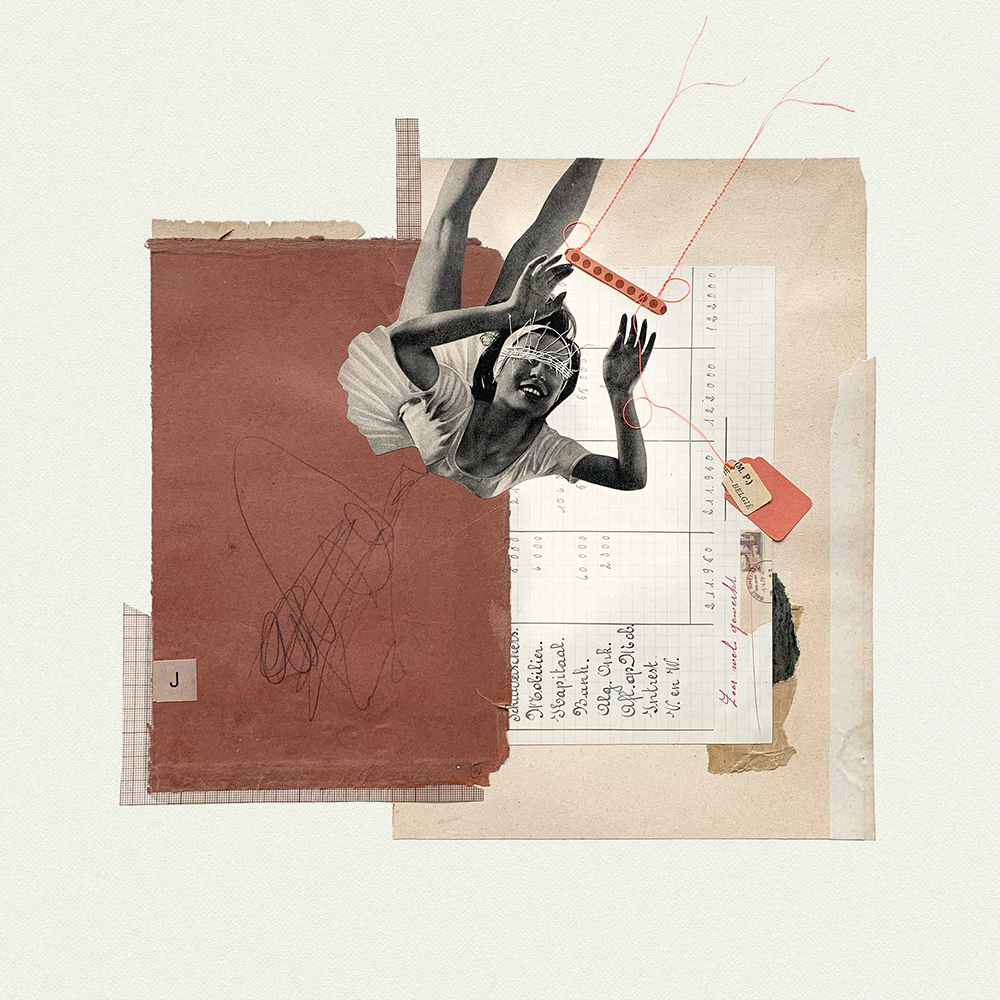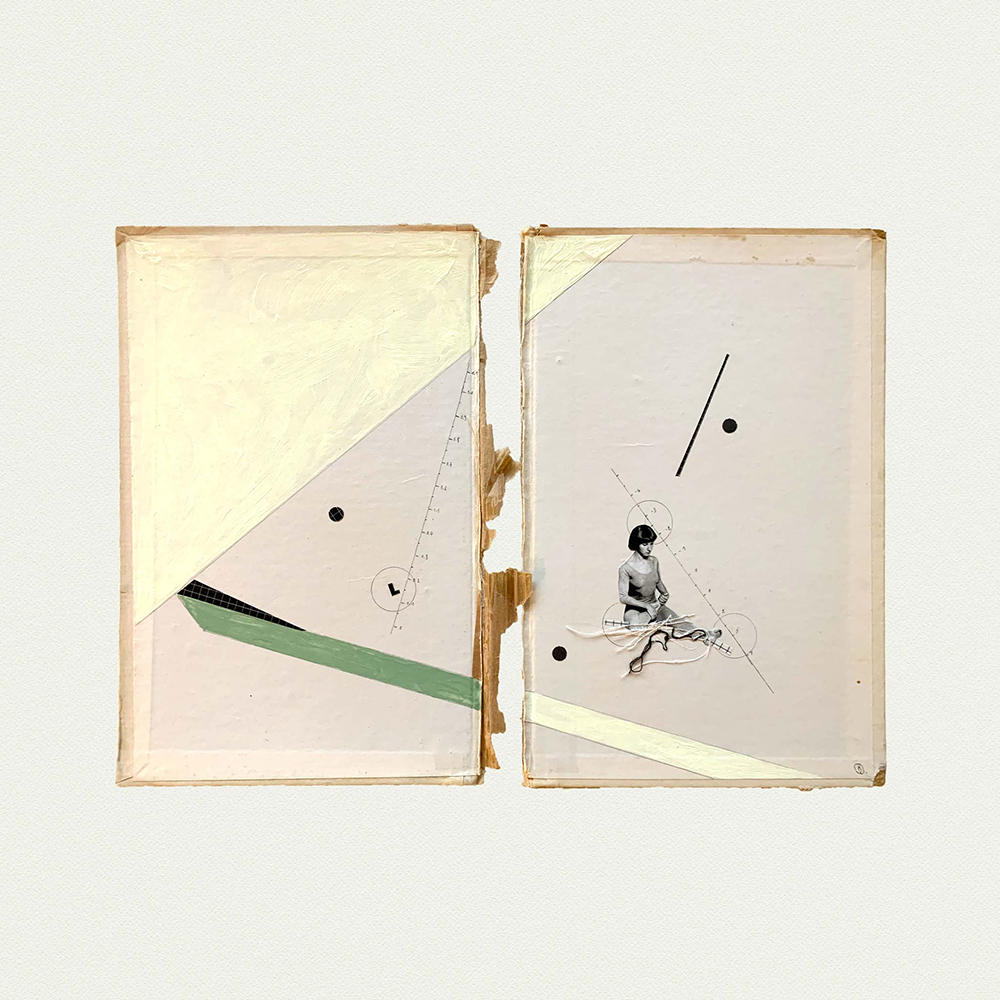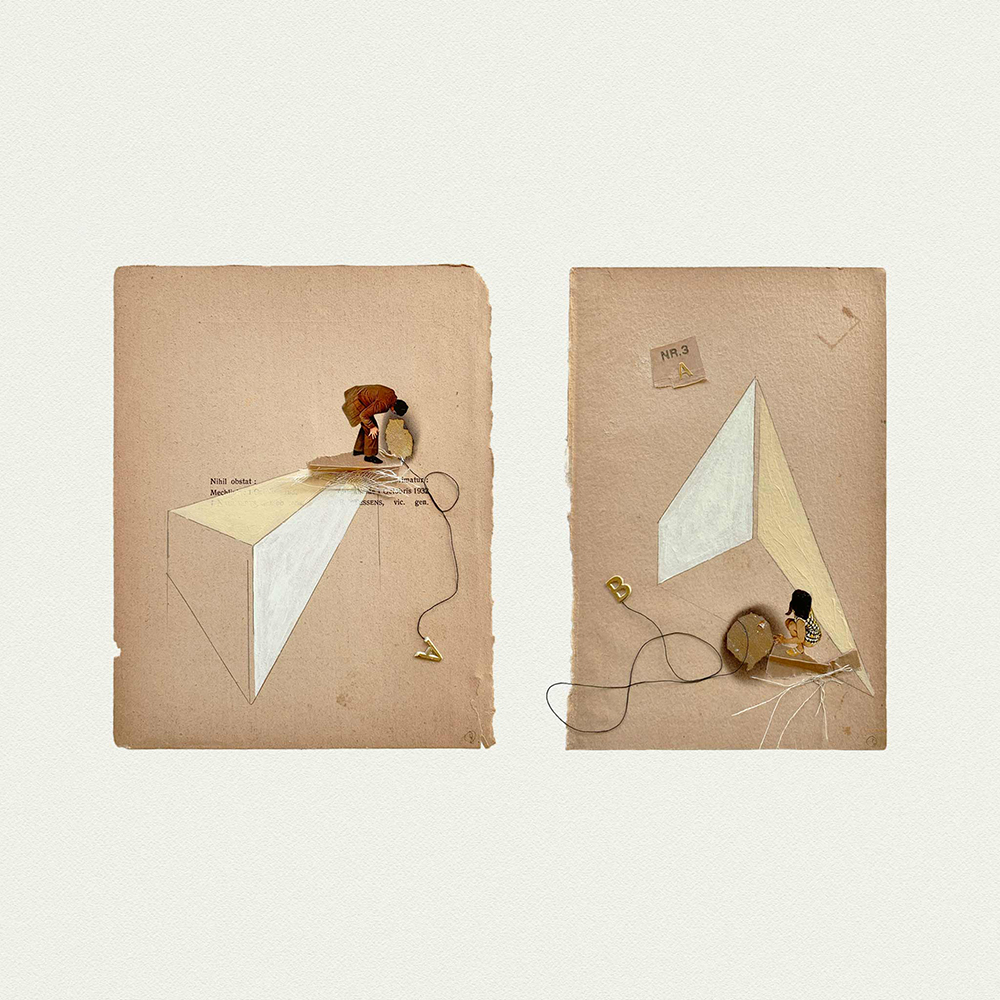interview
DOMINIQUE BARBERIS
collage artist
︎ Antwerp/Belgiumjune 06, 2020



Could you please introduce yourself a little? Where are you from and how and when did you start creating art?
I’m Dominique Barberis, I’m a collage artist and graphic designer from Antwerp, Belgium. I studied Illustration and Graphic Design at St. Lucas school of Arts in Antwerp. Together with my husband I run my own design agency EHBOntwerp.be.
Do you work in any other media other than collage?
I mostly create collage art, but I try to experiment with other materials and media. The colors and shapes in my work have to blend well with each other. Therefore I use extra techniques in my collages to strengthen the whole, like painting, drawing, sewing, typography, … For some time I’ve been making wooden objects, but I also use collage techniques to decorate them. In my professional life I make digital work as a graphic designer, although this may not strictly be art, it still is a creative process.


You work exclusively analog if I’m not mistaken. Have you ever tried working digitally?
This may sound strange, but I started by making digital collages. I had lots of old magazines, but hesitated to take them apart. One day I said to myself ‘F*** it’ and started cutting up the magazines, which was really liberating. Since that day I only make analog collages as an artist. They have a lot more tactility and depth than digital collages, and they are truly unique because I can use each magazine clipping or book cover only once.
This does not mean I look down on digital work, as a graphic designer I still create digital collages for clients.
How would you describe you work in your own words?
Someone once asked me to describe my work in one sentence. After long and hard thinking, this was my answer: ‘Creating stories by visually talking about emotions.’ I see and feel a story and give it an organic form. Tactile, subtle and purified. Balanced but with a surprising tension. I visually talk about love, joy, farewell, comfort, closeness and freedom ...
I start by removing the old, read out story from the book by tearing out the inner pages. Then I visually create a new story (my own) on the front- and backcover of the book. When I feel the artwork is finished, I try to find a title that makes the viewer think and gives the work a twist by playing with words and double meanings. The most important however is to give everyone the possibility to find their own story in my work. It is very satisfying when someone tells me what they see in one of my works and it is completely different from my own vision. That way the artwork keeps growing, getting more and more meaning. That’s when I know I made a good piece.


What or who are your influences? Are they intellectual? Personal?
I can be influenced by anything, a walk in the forest, a site in the city, a painting, drawing, colour combination, tv show, song, ... I always keep my eyes open for new experiences, feelings and influences.
What is your work process like? Do you start with a specific idea? Or do you let your source material guide you?
I never start with a lined-out idea. For me, the making of the collage is the same as creating the story. Since I am limited to work with the materials I find, I have to start from these. I browse through my magazines, get inspired by an image and then the story of the collage unfolds itself in the process of making it.
I sometimes use an element that returns in different pieces. I created a number of works with such an element, a ‘drop’, which I use in different ways. Sometimes it is painted, sometimes cut out, only used half, …
The titles of my works are also very important, I play with words so they get a double meaning. The titles are a significant part of the artwork.


You work has a rather nostalgic feel to it. Do you have any specific ephemera you are drawn to?
I understand what you mean, but for me the art I make is not nostalgic, it is contemporary, even timeless. But by using old bookcovers and clippings from old magazines, I think my work automatically has a nostalgic feel to it. I don’t specifically try to create this, but I do like this look, though. I never work with materials from modern magazines or books, the old materials I use have a warm and tactile feel, they have a history that becomes part of the story I try to tell with my work.
What are your sources for found images?
I get my materials everywhere I can find them, fleamarkets, recycling parks, library sales, garage sales, second hand websites, ... By now all my friends know I’m always searching for old books, magazines, photo’s, so they keep their eyes open and give me a call when they stumble on some hidden treasure for me.
What’s important to me is that I recycle old materials and give them a new life. I will never work with newly bought materials.


It takes quite a bit of strength to tear books apart. Especially old ones with hard covers. How do you feel when you deconstruct a book?
Tearing books apart is easier than it seems.
In the beginning I felt a bit guilty when I tore up an old book, as if I killed a part of history. But now I feel excited that I can give new life to an old book that probably no one would ever read again and would else end up on a container park or in a box in someone’s basement.
What are your working on currently?
Currently I have cleaned up my workspace and am working on some stuff we’re creating for our graphic design agency. But I will start on some new pieces in a while, since I have two exhibitions by the end of the year.
Any plans for future projects?
See my previous answer, two exhibitions in November and December, feel free to drop in.
Dominique Barberis ︎ ︎
Interview: Petra Zehner


